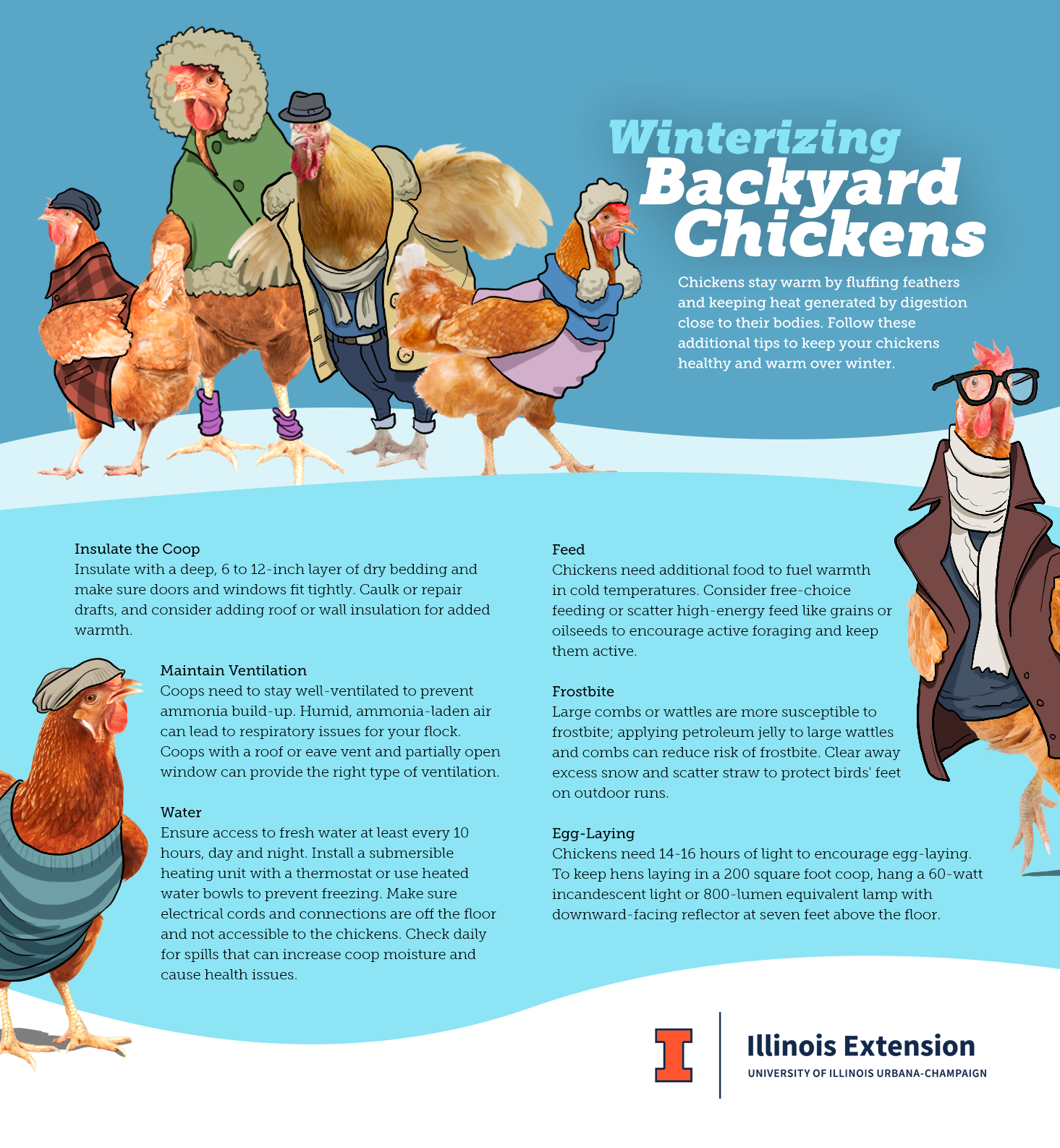If you are a chicken farmer looking for tips on how to create a cold weather chicken coop, then you have come to the right place. A cold weather chicken coop is a necessary part of successful chicken husbandry, as it helps keep chickens safe, warm, and healthy during the colder months. In this article, we will discuss the essential elements to include in a cold weather chicken coop, as well as some tips for properly caring for chickens in cold weather. With the right preparation, you can ensure that your chickens stay safe and healthy during the winter months.
Benefits of Cold Weather Chicken Coops
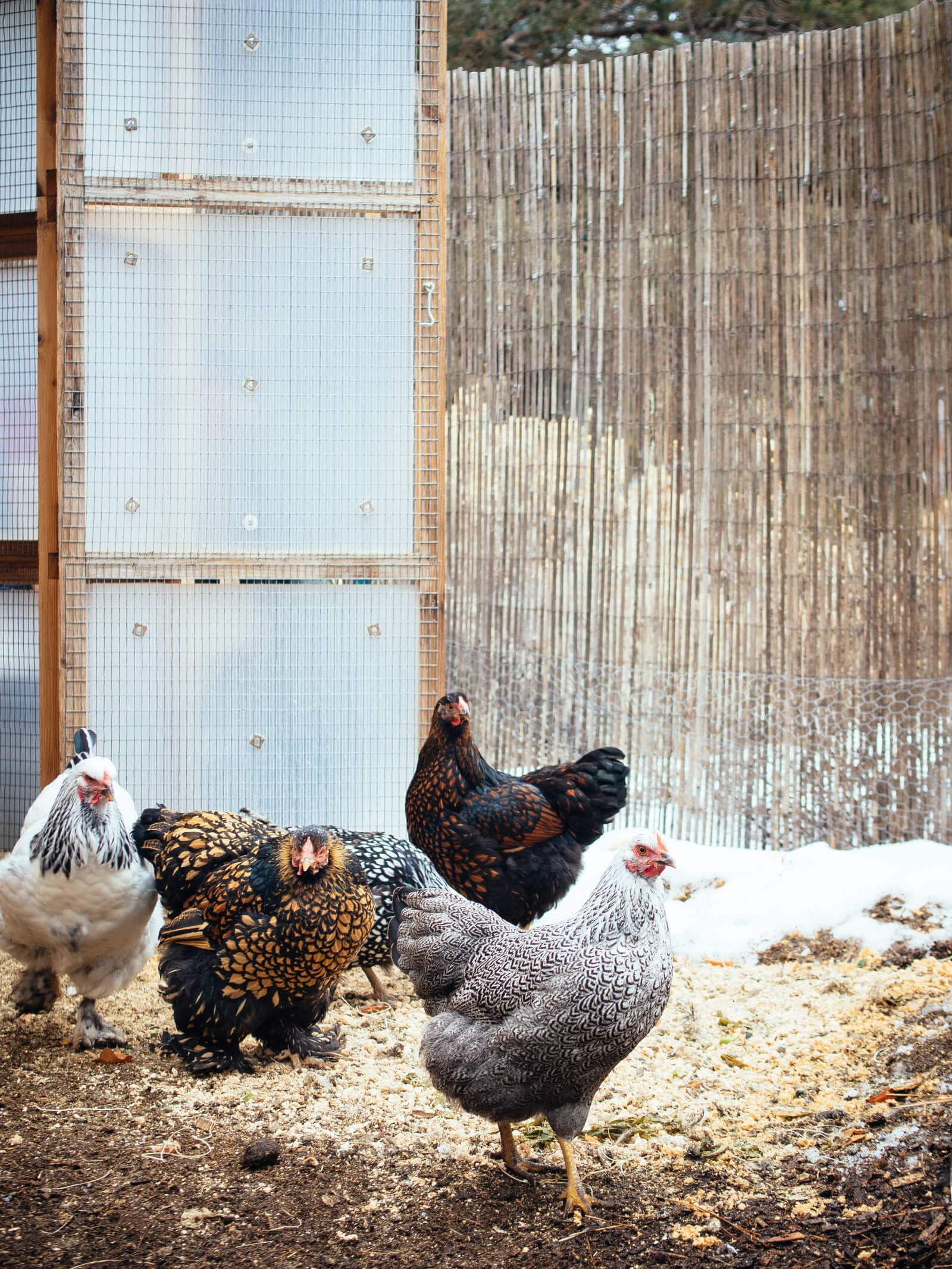
- Protection from the Elements: A cold weather chicken coop provides your chickens with protection from the elements, such as wind, rain, snow, and cold. This is especially important for chickens during the winter months.
- Temperature Control: A cold weather chicken coop provides insulation from the cold temperatures and helps to keep the chickens warm. This is especially beneficial if you live in a colder climate and need to keep the chickens at a comfortable temperature.
- Space Savings: A cold weather chicken coop can be designed to be smaller than regular chicken coops, allowing you to save on space. This is ideal for those who have limited space to work with.
- Low Maintenance: Cold weather chicken coops require less maintenance than regular chicken coops. Since they are designed to keep the chickens warm, they do not require heating or cooling systems that need to be regularly maintained.
- Durability: Cold weather chicken coops are designed to be durable and can withstand the elements better than regular chicken coops. This ensures that your chickens will be safe and secure in their coop for years to come.
A cold weather chicken coop is a great option for those living in colder climates. It offers many benefits, such as protection from the elements, temperature control, space savings, low maintenance, and durability. With these advantages, your chickens will be safe and comfortable in their cold weather chicken coop.
Building a Cold Weather Chicken Coop
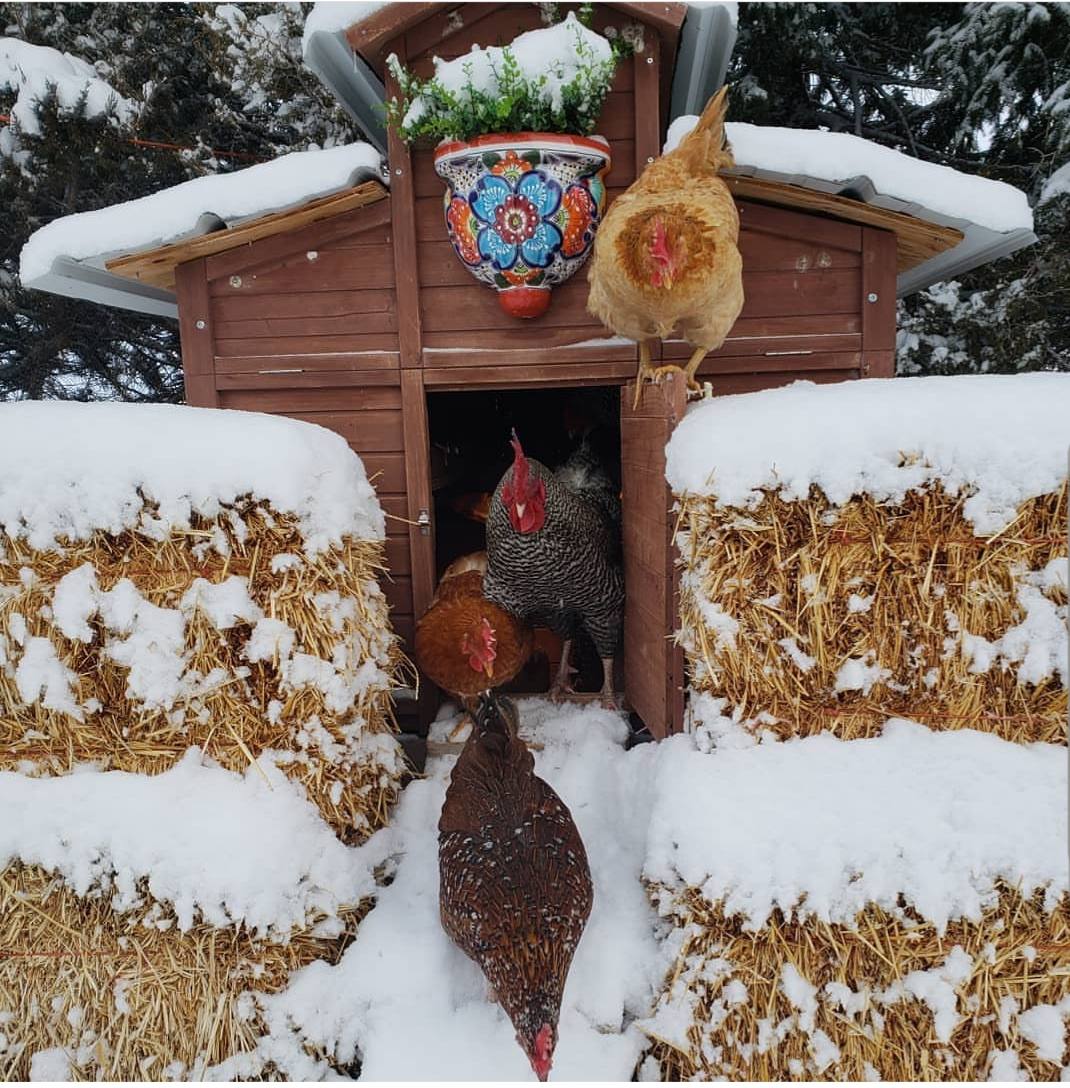
When constructing a chicken coop, the most important factor to consider is the weather. A chicken coop in a cold climate must be built to withstand temperatures that can dip below freezing. It is important to build a chicken coop that can keep the chickens warm and comfortable in cold weather.
Considerations for Building a Cold Weather Chicken Coop
When building a chicken coop for cold climates, it is important to consider the size of the coop, the location of the coop, and the materials used to build the coop. A larger chicken coop will provide more room for the chickens to move around and generate body heat, while a smaller coop will be more difficult to keep warm. The location of the coop also plays a role in how well the coop can retain heat. A coop located in a sheltered area will be better able to retain heat than a coop exposed to the elements. The materials used to build the coop should also be chosen for their insulating properties.
Designing a Cold Weather Chicken Coop
When designing a cold weather chicken coop, it is important to choose a design that maximizes insulation and air circulation. The walls of the coop should be made of thick materials such as wood or brick to provide insulation from the cold. The coop should also have adequate ventilation to prevent the buildup of moisture, which can cause mold and mildew.
Materials Needed for a Cold Weather Chicken Coop
When building a chicken coop for cold climates, it is important to use materials that are designed to keep the chickens warm. The walls of the coop should be made of thick materials such as wood, brick, or styrofoam to provide insulation. The coop should also be equipped with weather stripping and insulation to help keep the warmth inside.
Insulating the Chicken Coop
The last step in building a cold weather chicken coop is to insulate the interior. This can be done by adding insulation to the walls, floors, and ceiling. Additionally, it is important to insulate the windows and doors to keep the heat from escaping. Once the insulation is in place, the chickens will be protected from the cold and able to live comfortably in their new coop.
Ventilation in a Cold Weather Chicken Coop
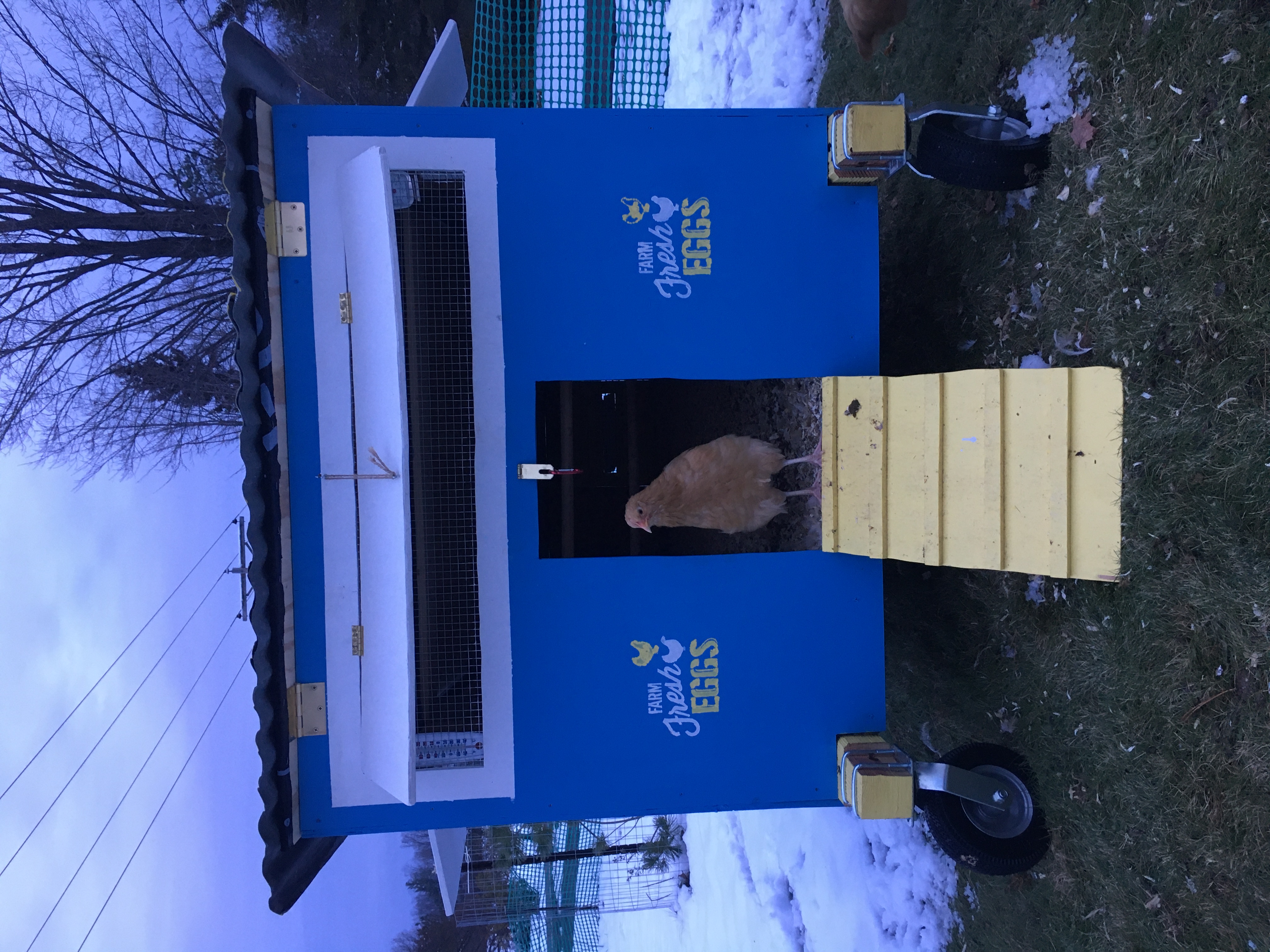
Good ventilation is essential in any chicken coop, but it’s even more important in a cold weather chicken coop. Proper ventilation helps to keep the air fresh, reduce humidity, keep the coop dry, and help keep the chickens healthy.
To create proper ventilation, you need to create an air inlet and an air outlet. The air inlet should be low to the ground and located in a sheltered area, such as under an overhang or in a corner. The air outlet should be higher up in the coop and not blocked off by anything. You can use vents, windows, or even open the door for ventilation.
Make sure the air inlet and the air outlet are not too close to each other. This will create a draft and make the chickens uncomfortable.
In addition, you should make sure the windows or vents are covered with wire mesh or plastic to keep out predators.
Ventilation is an important part of keeping your chickens healthy and comfortable in a cold weather chicken coop. Make sure to install an air inlet and an air outlet, and cover them with wire mesh or plastic to keep out predators.
Heating a Cold Weather Chicken Coop
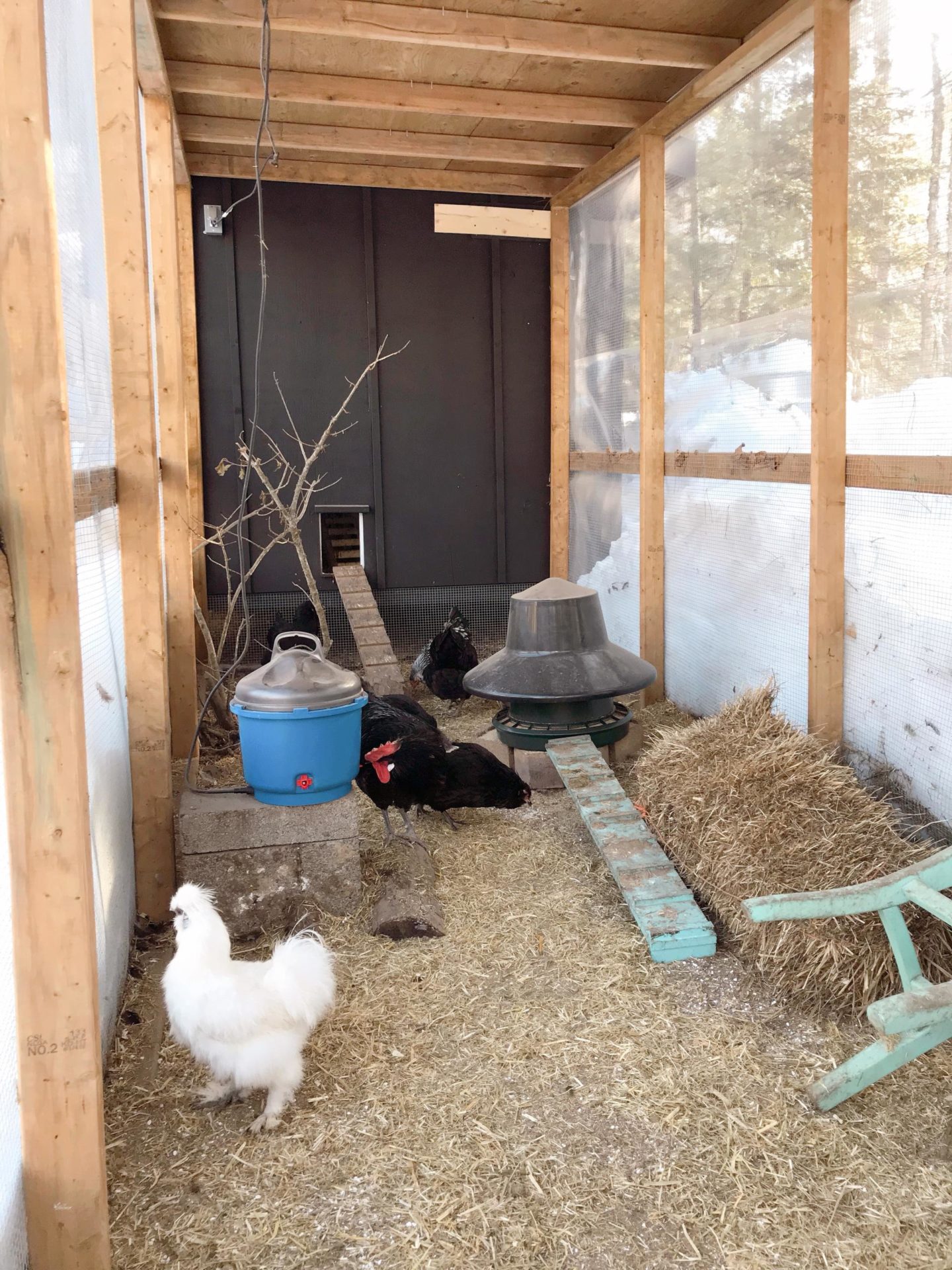
When it comes to chickens and cold weather, adequate heating is essential. If a chicken coop is not sufficiently heated, the chickens can become ill, and the eggs produced can be low in quality. To ensure the health and well-being of your chickens, it is important to properly heat their coop. Here is how to do it:
- Insulate the Coop: Insulating a chicken coop is the first step in keeping it warm. A well-insulated coop will help keep the heat inside the coop and keep out the cold. Using materials such as hay, wood shavings, and even newspaper can help to insulate the coop.
- Install a Heater: A heater is a great way to keep a chicken coop warm. There are a variety of heaters available, from electric to propane. Choose a heater that is suitable for the size of the coop, and be sure to follow all safety instructions when installing and using it.
- Provide Bedding: Providing bedding such as straw or hay can help keep a chicken coop warm. The bedding will help to insulate the chickens and keep them warm. It will also help to keep the humidity of the coop at an appropriate level.
- Install a Heat Lamp: Heat lamps are a great way to keep chickens warm during cold weather. Heat lamps can be hung inside the coop and will provide a source of heat. Be sure to follow all safety instructions when installing and using a heat lamp.
By following these steps, you can ensure that your chickens are kept warm and healthy during the cold winter months. Adequate heating of a chicken coop is essential for the health and well-being of your chickens.
Lighting a Cold Weather Chicken Coop

When creating a cold weather chicken coop, it is important to provide a source of light to help keep your chickens warm. The most common type of light used is an infrared heat lamp. This type of light provides a focused heat source that can be adjusted to the desired temperature. Additionally, the lamp can be set to turn on and off at certain times of day, or can be left on continuously. When using an infrared heat lamp, it is important to make sure it is in a well-ventilated area and that the wattage of the bulb is appropriate for the size of the coop.
Another option is to provide a light source in the form of a light bulb or LED array. This type of light provides a more diffuse heat source, keeping the coop warm without becoming too hot or too cold. Additionally, this type of lighting can be set to turn on and off at certain times of day, or can be left on continuously. It is important to choose a light bulb or LED array that is appropriate for the size of the coop and to make sure the wattage is not too high, as this could be a fire hazard.
Finally, some chicken owners opt to use a chicken-safe heater in their cold weather chicken coop. This type of heater is designed to keep the coop at a comfortable temperature without the risk of fire or other hazards. The heater can be adjusted to the desired temperature and can be set to turn on and off at certain times of day, or can be left on continuously.
By providing a source of light in the form of an infrared heat lamp, light bulb, LED array, or chicken-safe heater, you can create a warm and comfortable environment for your chickens in cold weather.
Choosing the Right Chicken Breed for a Cold Weather Chicken Coop
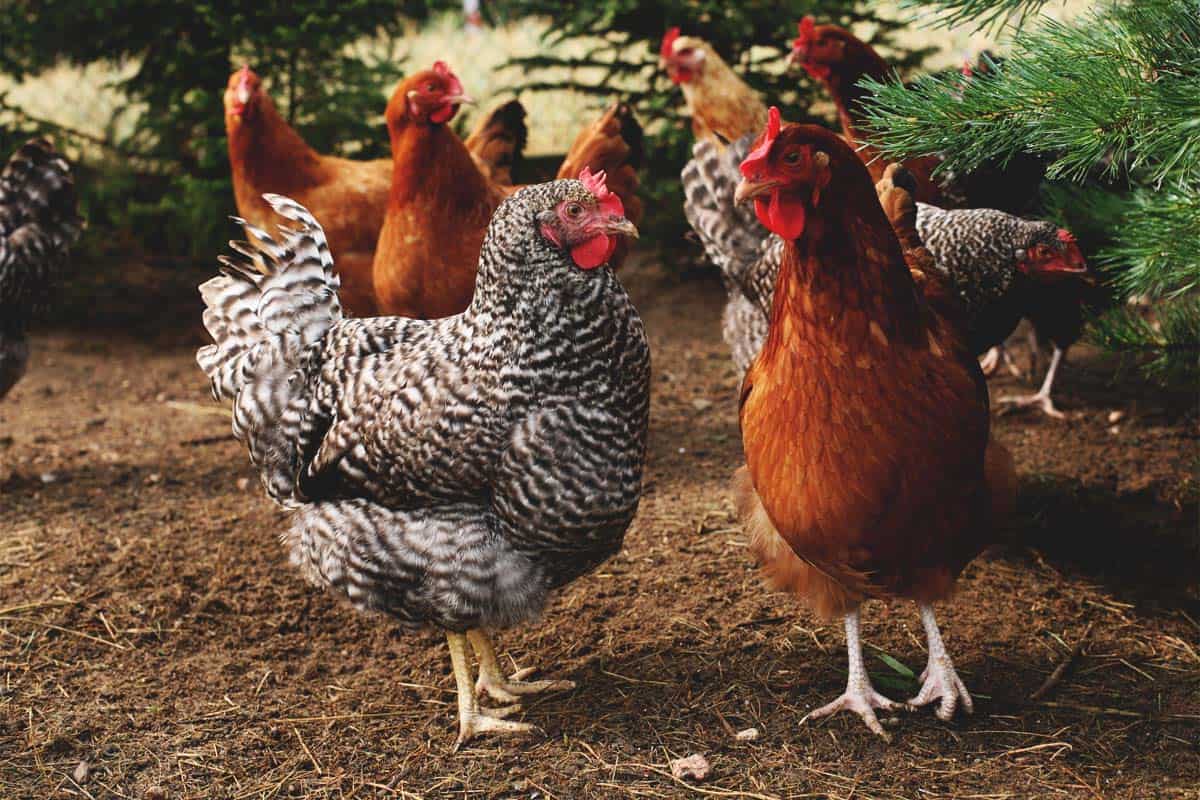
When building a cold weather chicken coop, one of the most important considerations is choosing the right chicken breed. It is important to select a breed that is well-suited to the cold climate, as some breeds are more resilient to cold temperatures than others.
Hardy Breeds
The best cold-hardy chicken breeds are those that have feathering that insulates them from the cold, are generally calm and docile, and are able to handle the cold better than other breeds. Examples of these hardy breeds include the Plymouth Rock, Wyandotte, Orpington, and Australorp.
Dual-Purpose Breeds
Dual-purpose breeds are a great choice for cold weather chicken coops, as they are both good layers and provide a good amount of meat. Popular dual-purpose breeds include the Rhode Island Red, Sussex, and New Hampshire Red.
Bantam Breeds
Bantam breeds are miniature chickens that are smaller than the standard breeds. They are excellent for cold weather chicken coops, as they have an abundance of feathers and a smaller body size, which helps them stay warm in colder temperatures. Popular bantam breeds include the Sebright, Japanese Bantam, and Dutch Bantam.
Conclusion
When choosing the right chicken breed for a cold weather chicken coop, it is important to select breeds that are hardy, dual-purpose, and/or bantam. This will ensure that the chickens will be able to handle the cold temperatures and will provide the best chance of success.
Maintaining a Cold Weather Chicken Coop
Insulation is essential for keeping your chickens warm in colder climates. Use either foam or fiberglass insulation between the walls and ceiling of the coop and on the floor. This helps to keep the heat in and the cold out. You can also use plastic sheeting to cover windows and other openings to create an additional layer of insulation.
Ventilation is also important in cold weather. Make sure your coop has adequate ventilation to avoid condensation and other moisture problems. A combination of windows and vents is usually the best way to achieve proper ventilation.
Heating is necessary in cold climates. A small space heater can be used to keep a portion of the coop warm, while a larger heating unit can be used to heat the entire coop. Make sure to keep the heater out of reach of the chickens and also make sure to follow all safety instructions when using any type of heating unit.
Bedding is also important for cold weather chicken coops. As the weather gets colder, you should use deeper layers of bedding material, such as straw or pine shavings, to help keep the chickens warm. It is also important to change the bedding regularly to keep it clean and free of bacteria and parasites.
Water needs to be available year-round, even in cold weather. Make sure to use a heated water source and check it frequently to make sure it is functioning properly. Also, make sure to keep the water free of ice in the winter months.
Perches need to be kept off the ground during cold weather. This helps to keep the chickens warm and safe from predators. You should also provide plenty of roosting options and make sure to keep perches elevated off the ground.
Feeders and Waterers should also be kept off the ground. This helps to keep the food and water from freezing, as well as keeping it out of reach of predators.
Lighting should be provided year-round, even in cold weather. This helps to keep the chickens active and healthy. Make sure to use a low wattage light and provide plenty of shade during the day to avoid over-heating.
Pest Control is important in any chicken coop, but especially in cold weather. Make sure to check the coop regularly for signs of mice or other pests and take measures to eradicate them if necessary.
Maintenance is also important in cold weather. Make sure to check the coop regularly for any signs of damage or wear and take measures to fix any issues as soon as possible. Regular maintenance will help to keep your chickens healthy and safe in the cold winter months.
Frequently Asked Questions
What are the Best Materials to Use for a Cold Weather Chicken Coop?
Insulation: Insulating your chicken coop is key for protecting chickens from the cold. To do this, use insulation materials like foam boards, spray-in foam insulation, or straw bales.
Wood: Using wood is another great option for creating a cold-weather chicken coop. Cedar, redwood, and pine are all good choices for the walls, floors, and roofs of a chicken coop.
Metal: Metal can be a good material to use when creating a cold-weather chicken coop. Galvanized steel and aluminum are both good choices for the walls, floors, and roofs of a chicken coop.
Plastic: Plastic can be a good material to use when creating a cold-weather chicken coop. Polyethylene, polypropylene, and polyvinyl chloride are all good choices for the walls, floors, and roofs of a chicken coop.
Glass: Glass can be a good material to use when creating a cold-weather chicken coop. Tempered glass is a good choice for the walls, floors, and roofs of a chicken coop.
Fabrics: Fabrics can also be used to create a cold-weather chicken coop. Heavy-duty canvases or tarps are good choices for the walls, floors, and roofs of a chicken coop.
How often should I inspect my chicken coop during cold weather?
It is recommended to inspect the chicken coop on a weekly basis during cold weather. Check for any broken windows, drafts, or other areas that may be causing the coop to be too cold. Make sure all bedding is kept clean and dry to prevent frostbite. Additionally, check for any signs of illness or injury that may be caused by the cold. If any issues are found, take measures to fix them immediately.
What temperature is too cold for chickens in a coop?
Chickens can withstand surprisingly cold temperatures, but they should be kept above 0°C (32°F). Below this temperature, the chickens risk hypothermia, frostbite, and even death. To ensure their safety in cold temperatures, it is important to provide insulation and draft-proofing for their coop, and to make sure that their water source does not freeze. Additionally, provide them with a warm, dry bedding material and, if necessary, a heat source.
How Can I Protect My Chicken Coop From Strong Winds?
Secure the chicken coop to the ground with stakes or anchors to prevent the wind from blowing it away. Make sure to use a heavy-duty tarp or roofing material to cover the coop, and ensure that there are no gaps or holes that could let in winds. Increase the height of the walls of the coop to create a windbreak and reduce the chance of strong gusts entering the coop. Consider adding an extra layer of insulation to the walls and roof of the coop to keep the chickens warm and safe in cold weather.
What type of bedding is best for the floor of a cold weather chicken coop?
Straw: Straw is the most popular and recommended bedding for chicken coops in cold weather. It is absorbent, dry, and soft, making it a great material for your chickens to stand and sleep on. It also helps keep the coop warm and dry by insulating the floor from the cold weather. It is also relatively inexpensive, making it a cost-effective option.
Wood Shavings: Wood shavings are another great option for bedding in cold weather chicken coops. They provide a softer and more comfortable surface for your chickens to stand and sleep on. They also absorb moisture, helping keep the coop warm and dry. Wood shavings are also relatively inexpensive and can be found at your local farm or garden center.
Hay: Hay is a great choice for colder climates, as it is more absorbent and insulates better than straw. It also provides a soft and comfortable surface for your chickens to stand and sleep on. However, hay is not as cost-effective as straw or wood shavings, so it may not be the most practical option for larger coops.
Sand: Sand is a great option for cold weather coops, as it is relatively inexpensive and provides a good insulating layer between the floor and the cold weather outside. It also helps absorb moisture and is easy to clean. However, sand can be abrasive for chickens, so it may not be the best choice for smaller coops.
Conclusion
Creating a cold weather chicken coop is an important step in chicken husbandry. It requires planning and consideration of the environment and the breed of chicken. It should be built to provide adequate protection from the elements while allowing ventilation and access. Provisions need to be made for lighting and insulation, and bedding should be used to keep the coop warm. By following these tips, you can ensure your chickens stay safe and healthy in their coop in cold weather.
